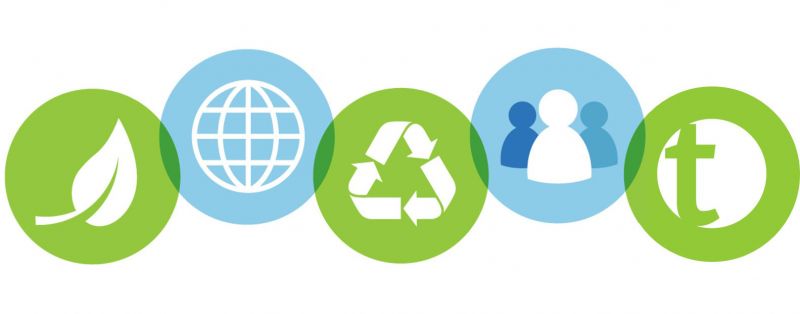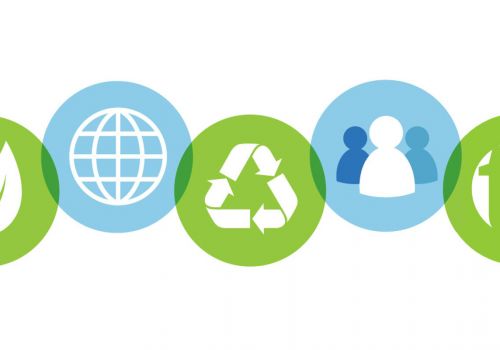Sustainability



Terraphase Sustainable Business Practices
Terraphase encourages and promotes sustainable operations and business practices. Our staff includes Envision Sustainability Professionals certified by the Institute for Sustainable Infrastructure. As part of our commitment to sustainability, in 2019 Terraphase established a program to evaluate our operational impacts on the environment through accounting for our carbon footprint. We track the amount of carbon produced by travel and purchase carbon credits to offset these impacts.
We are also committed to embedding sustainability in project planning and outcomes to reduce energy, waste, and air emissions during operations, site investigation, and cleanup. We have been an Alameda County Certified Green Business since 2015. Also in 2015, Terraphase’s Sustainable Committee adopted an Environmentally Preferable (Green) Purchasing Policy. This policy strives for the conservation of natural resources, minimization of environmental impacts, reduction in hazards to workers and our community, and reduction in materials sent to the landfill. The following are additional ongoing Terraphase standard practices that will lessen operational and field-related impacts on the environment:
Terraphase Standard Practices for Reducing Environmental Impacts of Operations
1. Transportation
- Alternative transportation is encouraged; staff often commute to work using public transportation or by cycling. Other travel is also typically made using public transportation or car sharing service providers such as Lyft or Uber.
- Frequent maintenance of company fleet to ensure efficiency. We maintain logs of maintenance to make sure the vehicles operate safely and efficiently. Fuel efficiency is one of the factors used to evaluate new vehicle purchases.
- Employees are incentivized to utilize public transit options through tax-deductible Commuter Check program.
- Employees are provided with space and racks in the office to lock up bicycles, and biking is encouraged.
- Hybrid work arrangements can be utilized to reduce our carbon footprint.
- When feasible, preference will be given to site meeting attendance using public transportation or ride sharing.
2. Reducing Waste at the Source
- Purchase durable reusable or refillable products whenever feasible.
- Printer default for multi-page document printing on both sides and in black & white.
- Avoid polystyrene (Styrofoam) products for the kitchen department.
- Avoid purchase of single-serving plastic water bottles for use by staff or guests by providing chilled filtered still and sparkling water.
- Reduce packaging. Reusable, recyclable, or compostable packaging preferred.
- We convinced owners of office buildings we operate in to provide compost bins.
- Office waste is recycled, as well as sampling containers when possible.
- We minimize hardcopy report volume and use electronic documentation where possible.
3. Buying Recycled Content Products
- Office paper shall contain at least 30% recycled content and kitchen paper towels shall contain at least 35% recycled content.
4. Saving Energy, Water, and other Natural Resources
- Use efficient interior lighting, indoors and out – at least as efficient as T-8 fluorescent bulbs for overhead lighting, and compact fluorescent bulbs (CFL) for task lighting. LED for greater efficiency.
- Aerators are installed on office sinks to reduce water use.
- We utilize electronic deliverable methods whenever possible.
5. Avoiding Toxics
- Purchase safer cleaning products, including those that bear logos such as Green Seal, EcoLogo, or Design for the Environment, or that receive average or higher ratings on www.goodguide.com.
- Use non-aerosol containers when available.
- Avoid added antibacterial agents such as triclosan in hand, dish, and general cleaners.
- Use wax pencils for field marking in lieu of Sharpie markers, when appropriate.
6. Green Remediation/Sustainable Project Outcomes/Green Sampling Tools
- Environmental and social costs on assessment and remediation options are included in cost benefit assessment of remedial alternatives for projects.
- Use of solar-powered equipment that will reduce air emissions, noise, and energy use.
- Where possible, combine project field mobilizations to lower cost and environmental impact through greenhouse gas (GHG) emissions.
- Use of push probes, low-flow sampling, and diffusion bag samplers to reduce the generation of investigation-derived waste (IDW). When appropriate, use native material to backfill borings to reduce spoils and associated transportation and landfill disposal.




